Denim may not have been invented in the United States, yet jeans and denim-wear have become a distinctly “American” look. It has symbolized the working class, counterculture, and youthfulness for generations. The styling and cut have changed over the years, while the heart and soul of denim has stayed the same. In denim, there is the promise of change and a new world, of protests, rebellion, and antiestablishment, but most of all, the promise of a flattering and well-fitting pair of pants.
Fashion from France
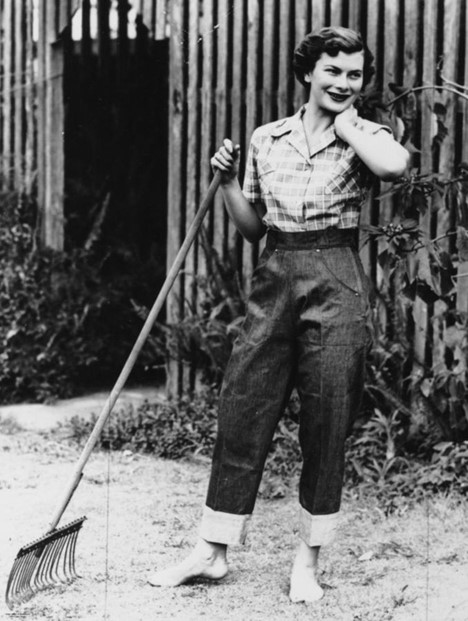 While fashion has long been associated with the haute shine of Paris, our story begins in a small town in southern France named Nîmes. There, 19th century French textile manufacturers were attempting to recreate an Italian blue cotton fabric called “jeane” that was popular among the farming class because of its sturdiness. During the process, they made a mistake in the weaving technique that produced a stronger, more durable fabric: denim.
While fashion has long been associated with the haute shine of Paris, our story begins in a small town in southern France named Nîmes. There, 19th century French textile manufacturers were attempting to recreate an Italian blue cotton fabric called “jeane” that was popular among the farming class because of its sturdiness. During the process, they made a mistake in the weaving technique that produced a stronger, more durable fabric: denim.
All About Indigo
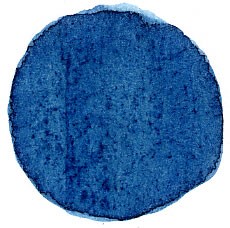 For centuries, indigo-dyed fabrics were a symbol of wealth and prosperity in Europe because the indigo plant is native to India. Textile manufacturers tried for centuries to grow the fickle plant in Europe, but it wasn’t until the growth of the American colonies that the indigo boom occurred. In the 17th century, colonists realized that the Southern heat and humidity was the perfect environment to grow indigo’s cousin, Amorpha Fruticosa, which when used as a dye, gives a similar coloration to textiles as indigo.
For centuries, indigo-dyed fabrics were a symbol of wealth and prosperity in Europe because the indigo plant is native to India. Textile manufacturers tried for centuries to grow the fickle plant in Europe, but it wasn’t until the growth of the American colonies that the indigo boom occurred. In the 17th century, colonists realized that the Southern heat and humidity was the perfect environment to grow indigo’s cousin, Amorpha Fruticosa, which when used as a dye, gives a similar coloration to textiles as indigo.
Italy and France became some of the largest importers of this “fake indigo,” and they used the dye liberally. In America, the dye was easily accessible, and by the end of the 1800s, the process to create artificial indigo had been discovered, thereby cementing the dye with working-class wear.
From the Gold Rush to the American Military
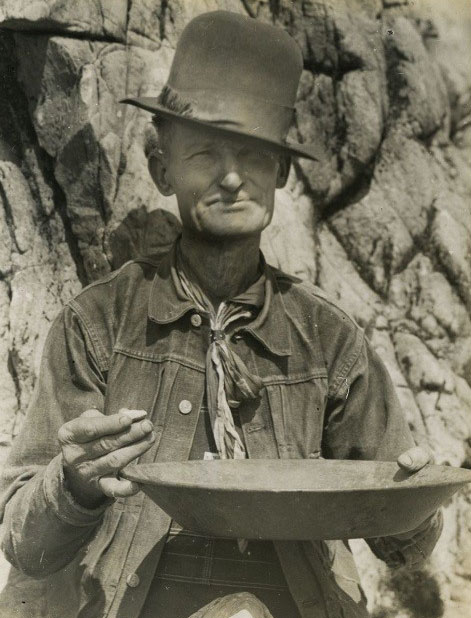 In 1850s America, a Bavarian dry goods merchant named Levi Strauss came to San Francisco to open his own shop. The California territory was bursting with immigrants and pioneers seeking their fortune in gold, but for Strauss, his fortune was made a different way. One of his clients, a local tailor by the name of Jacob Davis, had developed a new way of making denim workpants. These pants had copper rivets at various seam points to reinforce the strength of the fabric. Davis’ design was a hit, and he wanted to patent it, but he lacked the financial backing. In response, he went to the man who sold him the denim in the first place: Levi Strauss. On May 20th, 1873, Strauss and Davis received the patent for their riveted “waist overalls,” and the blue jeans were born.
In 1850s America, a Bavarian dry goods merchant named Levi Strauss came to San Francisco to open his own shop. The California territory was bursting with immigrants and pioneers seeking their fortune in gold, but for Strauss, his fortune was made a different way. One of his clients, a local tailor by the name of Jacob Davis, had developed a new way of making denim workpants. These pants had copper rivets at various seam points to reinforce the strength of the fabric. Davis’ design was a hit, and he wanted to patent it, but he lacked the financial backing. In response, he went to the man who sold him the denim in the first place: Levi Strauss. On May 20th, 1873, Strauss and Davis received the patent for their riveted “waist overalls,” and the blue jeans were born.
By 1901, the US Navy approved and began issuing denim bell bottoms to servicemen, and by 1919 the US Army began issuing denim work clothes and coveralls to mechanics, drivers, and machinists. During World War II, as the GIs went abroad to the frontlines, women entered the workforce to keep the factories running. There, women were introduced to the workwear denim jean, and they continued to wear them in post-War America.
Workwear to Fashion
 Through the 1940s, denim jeans were predominantly worn by civilian men and women as work pants or outdoor wear, but in the 1950s, Hollywood gave rise to a new type of denim wearer. Hollywood stars like Marlon Brando and James Dean popularized the pant as part of the “bad boy” look thanks to their infamous roles in “The Wild One” and “Rebel Without a Cause.” Brando donned the classic 501 Levi’s, while Dean wore slim fit Lee 101Z Rider jeans. Both styled the jeans with tight-fitting white shirts, leather jackets, cuffed pant legs, and work boots.
Through the 1940s, denim jeans were predominantly worn by civilian men and women as work pants or outdoor wear, but in the 1950s, Hollywood gave rise to a new type of denim wearer. Hollywood stars like Marlon Brando and James Dean popularized the pant as part of the “bad boy” look thanks to their infamous roles in “The Wild One” and “Rebel Without a Cause.” Brando donned the classic 501 Levi’s, while Dean wore slim fit Lee 101Z Rider jeans. Both styled the jeans with tight-fitting white shirts, leather jackets, cuffed pant legs, and work boots.
This was the first time the American people saw denim jeans styled as something other than workpants or outdoor wear, which was not always well received. Denim jeans were associated with the “greaser” subculture and were a symbol of rebelliousness and anti-authority by the older generation. The younger generation, however, saw the style as modern and hip, changing the “greasers” from civil anarchists to cool bad boys, which is how we remember them today.
Agent of Protest
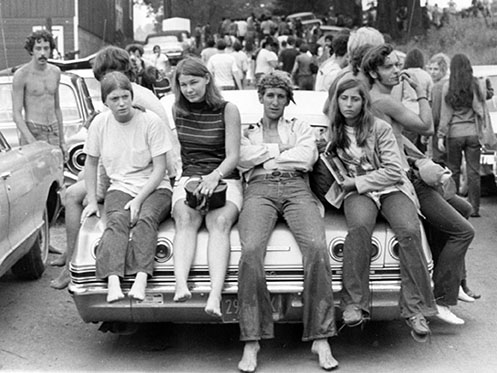 Starting in the 1960s with the “hippie” movement, denim jeans became a symbol of protest and youth culture. College students wore jeans to show solidarity with the working-class, while women’s rights protestors wore them to fight against perceived gender expectations. Throughout the 60s and 70s, jeans were still a symbol of the counterculture and were worn by everyone. From those who had issue with government policy to mainstream culture—rock musicians, protestors, college students, and more. They became so taboo that many schools banned the garment.
Starting in the 1960s with the “hippie” movement, denim jeans became a symbol of protest and youth culture. College students wore jeans to show solidarity with the working-class, while women’s rights protestors wore them to fight against perceived gender expectations. Throughout the 60s and 70s, jeans were still a symbol of the counterculture and were worn by everyone. From those who had issue with government policy to mainstream culture—rock musicians, protestors, college students, and more. They became so taboo that many schools banned the garment.
Since their inception, jeans have defied gender in a way that other garments had not; everyone could wear jeans. They are equalizing for all genders. Every major jean trend whether it be bellbottoms, skinny jeans, or high-waisted boyfriend jeans has attracted a wide variety of disciples and it’s because jeans are universal. They are durable, stylish, and comfortable offering qualities that all people, no matter their gender, seek from their clothing.
Denim Today
 By the 1980s, denim jeans had seeped their way across classes in America. From the millionaires to the working-class, everyone wore jeans, and in 1976, Calvin Klein became the first major brand to send a pair of jeans down the runway. Today denim is an $85 billion dollar industry, and it is growing by the billion every year. Countries like Bangladesh, China, and Mexico lead production for American-sold jeans, but Italy still has a firm grip on jean production almost 300 years after the invention of “jeane.”
By the 1980s, denim jeans had seeped their way across classes in America. From the millionaires to the working-class, everyone wore jeans, and in 1976, Calvin Klein became the first major brand to send a pair of jeans down the runway. Today denim is an $85 billion dollar industry, and it is growing by the billion every year. Countries like Bangladesh, China, and Mexico lead production for American-sold jeans, but Italy still has a firm grip on jean production almost 300 years after the invention of “jeane.”
Today, the most expensive pair of jeans you can buy is a pair of diamond encrusted Secret Circus jeans that sell for 1.3 million dollars, but even a pair of 501 Levi’s can make a pretty penny if they’re from the right year. In 2005, a 155-year-old pair of 501 Levi’s sold at auction for $60,000.
Denim and the Environment
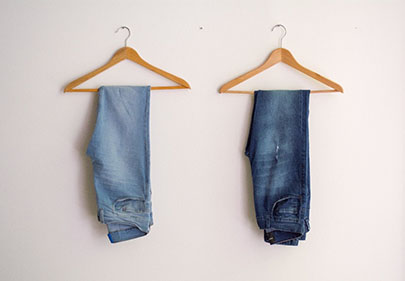 In the past few years, the sustainability of denim has come into play. While the durability of the material means the garments last longer, one pair of jeans requires thousands of gallons of water to produce. Not to even mention all the pesticides required to grow cotton or the potentially hazardous conditions denim producers are in to make and dye the fabrics.
In the past few years, the sustainability of denim has come into play. While the durability of the material means the garments last longer, one pair of jeans requires thousands of gallons of water to produce. Not to even mention all the pesticides required to grow cotton or the potentially hazardous conditions denim producers are in to make and dye the fabrics.
But these things are slowly changing. In 2019, the nonprofit environmental organization Ellen MacArthur Foundation released a set of guidelines for ethical denim production and companies like Gap, Madewell, and Wrangler have all vowed to make the required changes to guarantee a healthier, happier fashion world for the future. Globally, many factories are working on viable solutions to produce more eco-friendly dyes and treatments to support the ubiquitous love of this ultimate fashion statement.
Conclusion
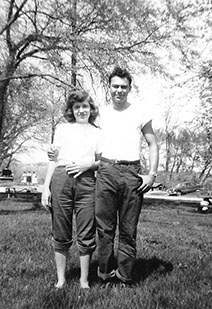 For many of us, denim is a daily part of our lives. There is nothing better than finding the perfect pair of jeans; snug enough to hug your curves in all the right ways, and comfy enough to wear all day long. Diverse in styling options, gender-free, this accidental icon has become a universal staple, making jeans one of the most influential garments in history.
For many of us, denim is a daily part of our lives. There is nothing better than finding the perfect pair of jeans; snug enough to hug your curves in all the right ways, and comfy enough to wear all day long. Diverse in styling options, gender-free, this accidental icon has become a universal staple, making jeans one of the most influential garments in history.
 Arin Froidl is a senior at Lindenwood University, double majoring in Mass Communications and Fashion Business & Entrepreneurship and a minor in Gender Studies. With a background in student journalism, Arin hopes to shed a truthful light on the ever-changing world of fashion and believes that transparency and evolution are the keys to success. In her role at Stars Design Group as a blogger and copywriter, she brings a youthful exuberance and a determination to highlight the past while looking towards the future.
Arin Froidl is a senior at Lindenwood University, double majoring in Mass Communications and Fashion Business & Entrepreneurship and a minor in Gender Studies. With a background in student journalism, Arin hopes to shed a truthful light on the ever-changing world of fashion and believes that transparency and evolution are the keys to success. In her role at Stars Design Group as a blogger and copywriter, she brings a youthful exuberance and a determination to highlight the past while looking towards the future.
About Stars Design Group: Founded by industry experts, Stars Design Group global fashion design and production house that helps clients bring their apparel to market. We consult, design, and facilitate production and delivery.
Understanding that the apparel industry is about evolution and not revolution, we continue to refine the way the industry does business. Embracing the latest 3D design and development software, we help to refine the design and approval process in a digital landscape, paving the way for rapid decisions and execution of programs while reducing mistakes, improving fit, minimizing returns, and increasing profit margins.
With a network of 67 factories in 14 countries worldwide, our relationships are generations deep. Being diverse in our manufacturing locations, we are nimble in an ever-evolving landscape and provide ethically manufactured apparel and accessories.


